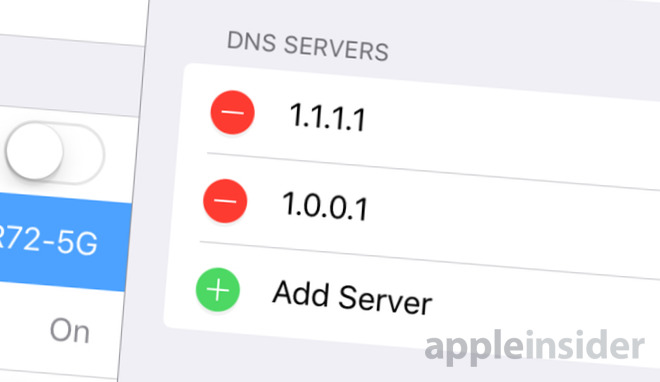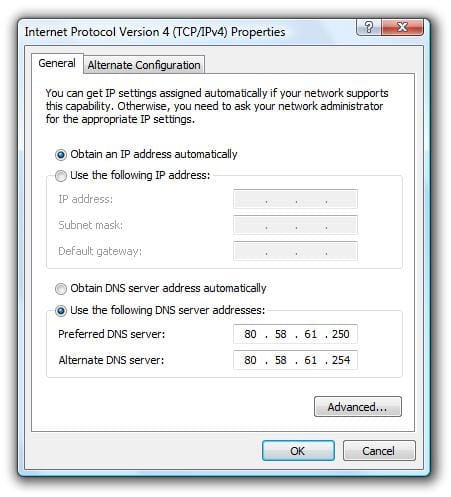Open Control Panel. Click View network status and tasks. Click Change adapter settings on the left portion of the Window. Double-click the icon for the Internet connection you're using. Click the Properties button. Click and highlight Internet Protocol Version 4 (TCP/IPv4) and click Properties.
DNS servers, or Domain Name System servers, essentially allow you to browse the Internet in a user friendly manner. They provide your computer with the capability to recognize the web addresses you type in and connect to their places on the web. With Internet service, your computer automatically gets assigned a DNS server to use. Most users don’t ever have to think about DNS servers or changing them.
Still, there are potential benefits to swapping out your assigned server for a new one,. Namely, with the speed and reliability of your Internet connection particularly in a web browser, you might want to change things up. You can use any DNS server, but the most popular ones come from Google and OpenDNS.
Here is how to edit your DNS servers on a Mac. How to Change Your Mac’s DNS Servers Open System Preferences on your Mac. Then choose the Network category. Make sure you’re connected to Wi-Fi and you have the Wi-Fi tab on the left selected. Then toward the bottom right, click Advanced In the upper navigation here, click the DNS tab. You should see your current DNS servers on the left.

Unless you added these yourself, you’re not able to edit them. However, clicking the + button underneath will let you start anew, so do that to begin adding your own DNS servers. (You might want to also write down the current IP-assigned DNS servers should you ever want to switch back to them.) If you’re unsure which DNS server IP addresses to use, try out Google’s or OpenDNS first. Google’s are 8.8.8.8 and 8.8.4.4. OpenDNS servers are 208.67.222.222 and 208.67.220.220. Enter these separately.


If you don’t want to use those, Lifewire has a of additional free and public DNS servers anyone can try out for themselves. Of course, if you have your own IP address in mind, you can use that as well. Note that macOS will prioritize connecting to DNS servers based on whichever is at the top of the list. Entering in five different IP addresses is fine for backups, but won’t matter if your Mac can connect to the first one successfully. When you’re all done here, click OK on the bottom right. Then lastly, click Apply back on the Network pane to save your changes. You’re all set.
Open a web browser, type in a domain name and see if you notice any improvement. At the very least, you’ll still have a stable Internet connection with new DNS backups for any future hiccups. Hp pavillion dv5000 drivers for mac download.
Your ISP has its own DNS servers and automatically provides those when you connect to the Internet. The same thing happens when you connect to public networks in places like coffee shops, libraries, and hotels. That isn’t necessarily a problem, but if you’re concerned your ISP is tracking and selling your website requests, changing your DNS entries is the way to go. It also ensures the public networks you connect to don’t get to collect the URLs you enter. Changing Your Mac’s DNS Server Address You aren’t limited to the DNS servers your ISP or local coffee shop assigns. Adding the servers you want takes only a few steps.
Here’s how to add DNS servers to your Mac’s network settings:. Go to Apple menu System Preferences. Choose Network. Select the network connection you want to modify. I started with my WiFi connection, then changed my Ethernet adapter connection, too. If you use your passcode to lock down settings don’t forget to click the Padlock and authenticate.
Click Advanced. New DNS server addresses show up at the bottom of the list, but you can drag them up higher.
When you’re done adding DNS addresses, click OK. Click Apply Your Mac starts at the top of the list to choose the DNS server it’ll use. If for some reason the first isn’t available, your Mac moves on to the next.
If none of those work, your Mac will look to your router for an entry. You can change the order of the entries in your DNS list with a quick click and drag. To remove an address, just select it and click the Minus button at the bottom of the DNS Servers list. IPhone, iPad, and iPod touch owners can set DNS servers, too.
How To: Change Dns Server Address For Mac Free
Andrew Orr does a great job of. DNS Server Alternatives Now that you know how to change the DNS server entries on your Mac, here are some options to choose from, like OpenDNS and: Google. 8.8.8.8. 8.8.4.4. 208.67.220.220. 208.67.222.222.
9.9.9.9. 1.1.1.1. 1.0.0.1.
Most Viewed Articles
- How To Download Just Cause 4 For Mac
- Moi3d Modeler For Mac
- Charismac Updates Emulex Fc Driver For Mac
- Asset Basset For Mac
- Qrow Branwen Icons For Mac
- Sccm Cmapputil For Mac
- Exporting Pngs And Other Graphic File Formats In Powerpoint 2011
- Download Tarot Gimbal Software For Mac
- Download Photoshop Cs3 For Mac
- Tag; Free Video Recording App For Mac
- Umds Download Vmware For Mac
- Nerdtool 0.8.1 Download For Mac
- Sonicstage Software For Mac
- Home Value Estimate For Mac
- How To Download Youtube Downloader For Mac
- Help With Renovation Horizon View Client For Mac
- Download Gretl Software For Mac
- It Documentation: Tcp/ip Configuration For Mac
- Video How To Unlock Vmware Workstation 11 For Mac
- Tvs Msp 250 Printer Drivers For Mac
- Hdvxdv (free Version Download For Mac
- Ign Mac Website For Mac
- Scan2cad V8 Keygen For Mac
- Digidesign Sound Accelerator Ii Rev B2 Used. For Mac
- Papisa Joana Download Rmvb For Mac